From Design to Delivery: The Complete Metal Presswork Process
In the world of manufacturing, precision and efficiency are crucial. When it comes to producing high-quality metal parts, presswork is one of the most efficient and cost-effective methods. Presswork involves using a mechanical or hydraulic press to shape or cut metal sheets into specific forms or designs. Industries ranging from automotive to electronics use this essential process to produce reliable and repeatable parts at scale.
In this article, we will walk you through the complete metal presswork process, from design to delivery. We’ll cover the various stages involved, explain how they work, and highlight the benefits that make presswork such a valuable method for manufacturing metal components.
What is Metal Presswork?
Metal presswork is a manufacturing process that uses a press machine to shape or cut metal sheets into predefined shapes. This can include a range of operations such as punching, blanking, stamping, and bending. The process is highly efficient and is particularly useful for mass-producing parts that require consistent shapes and sizes.
Mechanical and hydraulic presses perform presswork by applying tremendous force to a metal sheet placed between two dies. The die shapes the material into the required part, and the press removes any excess material to achieve the final design.
For foundational knowledge, explore our beginner’s guide on Metal Presswork Basics and its industrial applications.
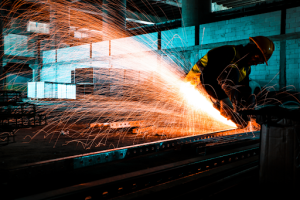
Complete Step-by-Step Metal Presswork Process
Step 1: Designing the Part
Before the presswork process can begin, the first step is to design the part. This step involves working closely with engineers and designers to define the exact specifications for the metal part to be produced.
Key Considerations in the Design Phase:
- Material Selection: The type of metal used (such as stainless steel, aluminium, or brass) affects the part’s strength, weight, and suitability for the intended application.
- Part Geometry: The designer must define the shape, size, and features of the part. This includes factors like the number of holes, bends, and the depth of the part.
- Tolerance and Fit: The part must meet specific tolerance requirements to ensure it fits within larger assemblies without issues.
- Production Volume: The design may differ based on whether the part is produced in small batches or large volumes. Larger runs typically result in more cost-effective designs. Please refer to our article on the Advantages of Metal Presswork in Manufacturing to understand why this method offers superior efficiency and cost-effectiveness.
- Tooling Requirements: Once the design is finalised, engineers will decide on the tooling required to produce the part. This includes selecting the right dies, press types, and the right set of tools to carry out the design.
During this phase, designers often use CAD (Computer-Aided Design) software to create detailed digital drawings of the part. They then use these designs to produce the physical dies and set the press parameters.
Step 2: Creating the Die
Once the team approves the design, they create the die, a custom-made tool used to shape the metal sheet during the presswork process. It consists of two halves, the upper die and the lower die, that press against the material to create the desired shape.
Types of Dies Used in Presswork:
- Single-Operation Die: This die performs a single operation, such as cutting, punching, or bending.
- Progressive Die: This die performs multiple operations in a single cycle, progressing the metal sheet through different stages until the final part is complete. Progressive dies are ideal for high-volume production.
- Compound Die: A compound die performs multiple operations simultaneously, making different cuts or forms on the metal sheet in one press stroke.
- Transfer Die: A transfer die handles larger, more complex parts by moving the part from one station to another in the press as it undergoes various operations.
Creating a die can take time and significant expertise. A well-designed die is critical for ensuring that the metal presswork process runs smoothly and efficiently.
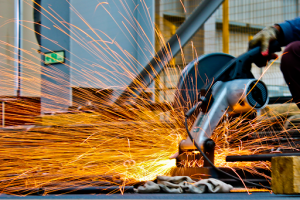
Step 3: Setting Up the Presswork Machine
Once the die is ready, it’s time to set up the presswork machine. The press machine applies force to the metal sheet, shaping it according to the die’s design. The team uses either a mechanical press or a hydraulic press, depending on the size and complexity of the part.
Types of Presswork Machines:
- Mechanical Press: These presses use a flywheel and a mechanical drive system to create force. They are faster and can produce higher quantities of parts in less time. Mechanical presses are typically used for simple, high-volume parts.
- Hydraulic Press: Hydraulic presses use hydraulic fluid to apply force and are known for offering more control over the speed and pressure of the press. Manufacturers often use them for more intricate or heavier components that need greater force or precision.
Machine Setup Process:
- Die Installation: The first step in setting up the machine is to install the custom die into the press. You must align the die correctly to ensure the metal sheet is shaped accurately.
- Metal Sheet Loading: The metal sheet, often in coil or sheet form, is loaded into the press machine.
- Adjusting the Machine Settings: The press machine settings are adjusted to control the speed, pressure, and number of strokes. The settings will depend on the material being used, the complexity of the part, and the type of press machine.
Once everything is set up, the team performs a test run to ensure the part forms correctly and the presswork machine operates as expected.
Step 4: Pressing the Metal Sheet
With everything set up, the actual presswork process begins. The press machine applies pressure to the metal sheet, forcing it into the die and shaping it into the final part. Depending on the design and the complexity of the part, this can take anywhere from a few seconds to several minutes.
Common Presswork Operations:
- Punching: Creating holes in the metal sheet for fasteners, pipes, or other components.
- Blanking: Cutting a sheet of metal into a specific shape, often used as a starting point for further processing.
- Bending: Shaping metal sheets into an angle or curve.
- Forming: Shaping the material to create a more complex 3D part, such as a box or container.
The team carries out each operation precisely to ensure the final part meets the desired specifications. Using progressive or compound dies allows them to complete multiple operations in a single press cycle, increasing the process’s efficiency.
Step 5: Post-Presswork Operations
Once the metal part is formed, there are usually additional steps to complete the process. These may include:
- Trimming: Removing any excess material that was left behind after the pressing operation.
- Deburring: Removing sharp edges or burrs that may have formed during the presswork process. This is important for ensuring the safety and functionality of the part.
- Surface Finishing: Applying surface treatments such as coating, painting, or polishing to improve the part’s appearance and corrosion resistance. These finishing processes work in tandem with precision cutting methods. Learn how modern techniques like laser cutting minimise waste in our separate blog.
Depending on the part’s complexity and requirements, these additional steps may vary, but they are essential for ensuring that the metal part is finished to the highest standards.
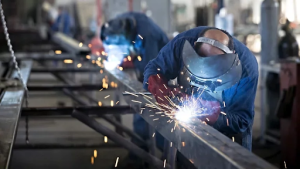
Step 6: Quality Control and Testing
After the part has been formed and finished, it undergoes quality control checks to ensure it meets the specified tolerances and quality standards. This process often involves visual inspections, as well as precision measurements using tools such as micrometers, calipers, and coordinate-measuring machines (CMM). Learn more about CMM and its types here.
Parts that pass quality control are then sent to the next stage, whether it’s assembly, packaging, or delivery.
Step 7: Delivery
Once the parts have passed quality control, they are packaged and prepared for delivery to the client. This step may involve:
- Packaging: Ensuring that the parts are protected during shipping, often using foam, plastic wrap, or cardboard.
- Shipping: Sending the parts to the client or manufacturing facility. Delivery times depend on the location and urgency of the order.
At Kirmell Ltd, we ensure that every part is delivered on time, packaged securely, and ready for use in your next project. Whether you need small custom orders or large-scale production, we provide reliable, efficient delivery services.
Why Choose Kirmell Ltd for Your Precision Presswork Needs?
At Kirmell Ltd, we specialise in delivering high-quality metal presswork services tailored to industries requiring precision components, such as automotive and robotics. With decades of experience and a commitment to excellence, we ensure your projects meet the highest standards.
Our presswork services include:
- Precision Pressing: We use mechanical and hydraulic presses to produce accurate metal parts, from small runs to high-volume production.
- Die Design and Manufacture: Our in-house team designs and manufactures custom dies to shape your parts exactly to your requirements.
- Metal Forming and Bending: We provide precision bending and forming for components like frames, brackets, and custom parts.
- Stamping and Blanking: We offer stamping and blanking to create parts like washers and fasteners, ideal for automotive and robotic applications.
- Surface Finishing: We offer deburring, coating, and polishing to ensure the parts are ready for their intended use.
Regardless of whether it’s for small-scale orders or large robotic material handling applications, Kirmell Ltd combines presswork, fabrication, and machining to provide tailored solutions for your metal parts.
Contact us today to learn more about how we can assist with your project.
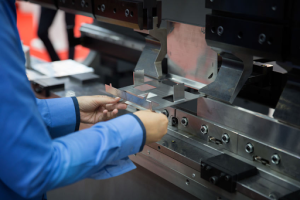
Conclusion
The metal presswork process is a fundamental part of modern manufacturing, providing cost-effective, high-precision parts for industries ranging from automotive to electronics. By understanding the various stages from design and die creation to delivery, you can appreciate how presswork plays a key role in producing custom parts that meet exact specifications.
FAQs
What is the metal presswork process?
How is a custom die created for metal presswork?
What types of presswork machines are used in manufacturing?
Why is precision important in metal presswork?
What is the role of surface finishing in the metal presswork process?

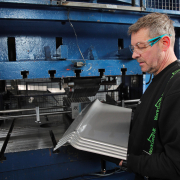
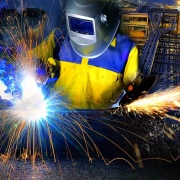
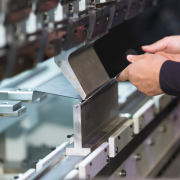
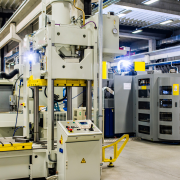
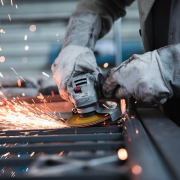
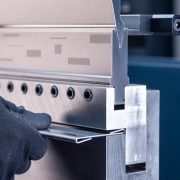
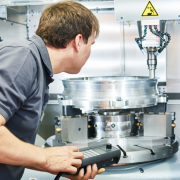
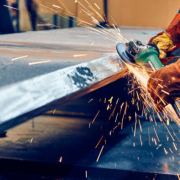



Leave a Reply
Want to join the discussion?Feel free to contribute!